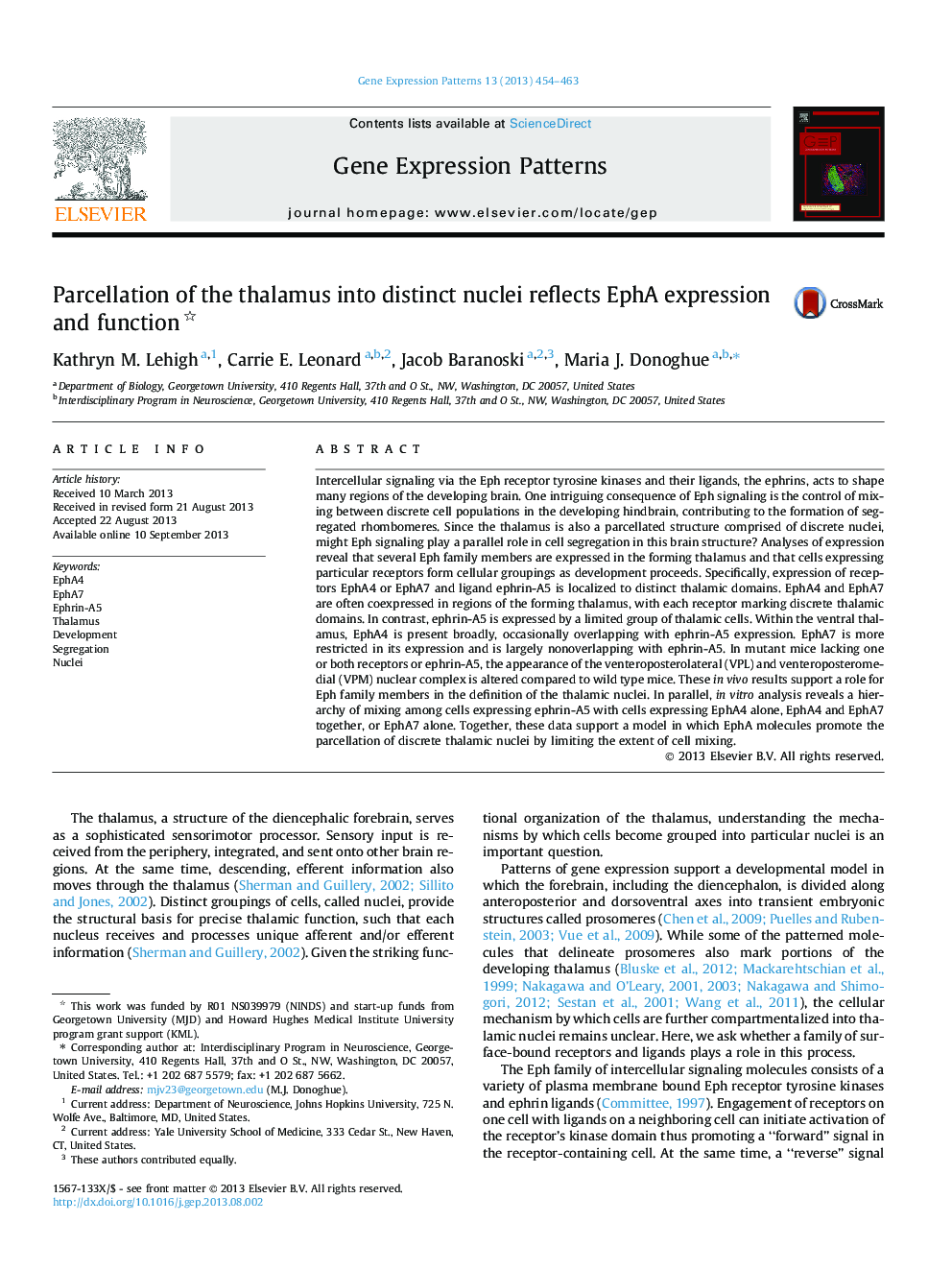| Article ID | Journal | Published Year | Pages | File Type |
|---|---|---|---|---|
| 10940167 | Gene Expression Patterns | 2013 | 10 Pages |
Abstract
Intercellular signaling via the Eph receptor tyrosine kinases and their ligands, the ephrins, acts to shape many regions of the developing brain. One intriguing consequence of Eph signaling is the control of mixing between discrete cell populations in the developing hindbrain, contributing to the formation of segregated rhombomeres. Since the thalamus is also a parcellated structure comprised of discrete nuclei, might Eph signaling play a parallel role in cell segregation in this brain structure? Analyses of expression reveal that several Eph family members are expressed in the forming thalamus and that cells expressing particular receptors form cellular groupings as development proceeds. Specifically, expression of receptors EphA4 or EphA7 and ligand ephrin-A5 is localized to distinct thalamic domains. EphA4 and EphA7 are often coexpressed in regions of the forming thalamus, with each receptor marking discrete thalamic domains. In contrast, ephrin-A5 is expressed by a limited group of thalamic cells. Within the ventral thalamus, EphA4 is present broadly, occasionally overlapping with ephrin-A5 expression. EphA7 is more restricted in its expression and is largely nonoverlapping with ephrin-A5. In mutant mice lacking one or both receptors or ephrin-A5, the appearance of the venteroposterolateral (VPL) and venteroposteromedial (VPM) nuclear complex is altered compared to wild type mice. These in vivo results support a role for Eph family members in the definition of the thalamic nuclei. In parallel, in vitro analysis reveals a hierarchy of mixing among cells expressing ephrin-A5 with cells expressing EphA4 alone, EphA4 and EphA7 together, or EphA7 alone. Together, these data support a model in which EphA molecules promote the parcellation of discrete thalamic nuclei by limiting the extent of cell mixing.
Related Topics
Life Sciences
Biochemistry, Genetics and Molecular Biology
Cell Biology
Authors
Kathryn M. Lehigh, Carrie E. Leonard, Jacob Baranoski, Maria J. Donoghue,
